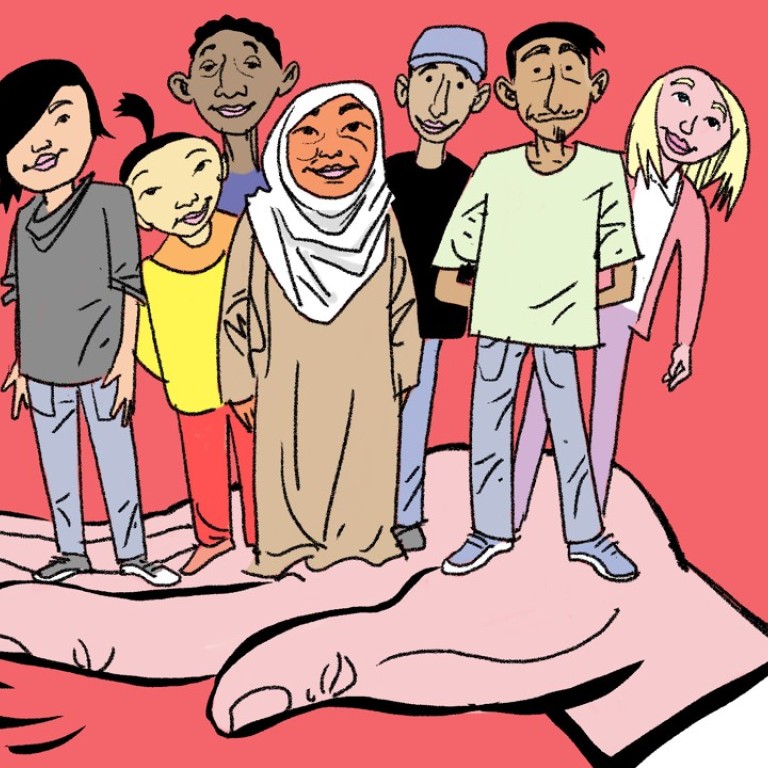
Hong Kong must see its young ethnic minorities as an asset, not a liability
Alfred Chan says with an increasing number of ethnic minority youth born here who are more comfortable with the Chinese language than their parents, Hong Kong should redouble its efforts to remove the obstacles they face in finding employment
An interesting characteristic of the ethnic minority population is that the median age is lower than that of the whole population by 7.2 years.
I look at these statistics in a positive light. Many of these ethnic minority youth consider Hong Kong their only home. A lot of them were born here and/or have spent most of their lives in Hong Kong, a fact reflected in the 115 per cent increase – from 38,042 in 2006 to 81,964 in 2016 – in the number of ethnic minorities born here.
Another interesting finding is related to their Cantonese language skills. In 2016, 64.3 per cent of ethnic minorities aged 5-14 were able to read Chinese, although the level of their reading skills is still lower than that of their ethnic Chinese peers. Yet, this is significant, given that language is the biggest barrier for many ethnic minorities in employment and higher education.
With the younger generation better placed to overcome this barrier, it is imperative that they get all the support they need to join the workforce on an equal footing. Currently, many ethnic minorities only know the basics of Chinese, which many employers consider inadequate.
Ethnic minority children should get to learn Chinese in Mandarin, rather than Cantonese

Chinese-language help for Hong Kong’s ethnic minority pupils lacks transparency, NGO finds
Hong Kong’s ethnic minority woes just keep getting worse
Worryingly, the number of working poor households has increased. The major cause is seen as lower employment earnings due to lower education attainment and skill levels. Larger household size is another factor that contributes to poverty for those holding a job.
Serious focus needs to be given to the younger generation of ethnic minority communities so they can be lifted out of the cycle of poverty
In addition, unemployment rates among some ethnic minority groups, such as Pakistanis and Nepalis, were also higher than that of the overall poor population.
While relief measures may assuage the situation somewhat, serious focus needs to be given to the younger generation of ethnic minority communities so they can be lifted out of the cycle of poverty. Both the private and public sectors have to sit up and take a good hard look at this resource pool and make sure they are equipped to participate in keeping Hong Kong competitive and economically stable.
It is not just skills that they need to be equipped with; it is also the emotional connection with Hong Kong and their feelings of loyalty to and solidarity with Hong Kong that need to be nurtured. The government, through its policies on education, employment, service provision and others, should aim to endow this group of future workers with all they need to help carry the banner of Hong Kong as an efficient international financial centre.
The hidden racism plaguing Hong Kong, and how one student is fighting back

To ensure this, several things need to be fixed.
First, Chinese language learning for ethnic minorities in schools has to be improved. Right now, the situation is less than satisfactory. In addition, those who missed the opportunity for learning at school should have other means of acquiring the language skills needed to land a job. This is an area that, despite years of trial and error, still requires much work.
‘Deeply worrying’ that some Hong Kong preschools reject ethnic minority pupils
Second, employers should review their recruitment policies to ensure the requirements stated for a job are commensurate with the actual needs. Additionally, employers should be ready to provide on-the-job skills and language training to give a leg-up to ethnic minorities who might otherwise fit the bill. Project Gemstone and other similar initiatives pioneered by the police and Correctional Services Department are demonstrating many win-win possibilities.

Hong Kong’s greatest resource is its people. To achieve economic and social prosperity, this resource must be tended to and developed. If a whole section of this valuable human resource is ignored or left behind, not only is it short-sighted, it is also counterproductive.
Professor Alfred Chan is chairperson of the Equal Opportunities Commission

